When I think of a cardboard shelter, what comes to my mind is a person desperately holding a flimsy mess over their head as it disintegrates in the rain. That a well-known architect has found a way to convert commonly discarded items into usable (and even attractive) construction materials is a feat of creativity and frugality.
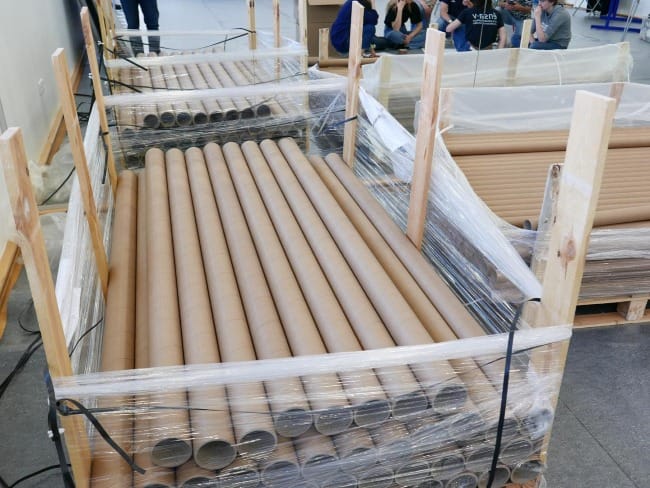
The architect, Shigeru Ban, has designed many iconic structures such as the Mt. Fuji Heritage Center (evoking Mt. Fuji turned on its head) and Curtain Wall House, in Tokyo (which showcases how Shigeru plays with internal and external walls between outside and inside).
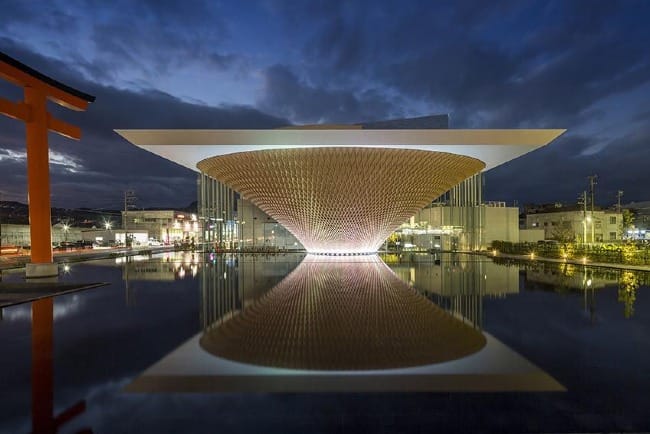
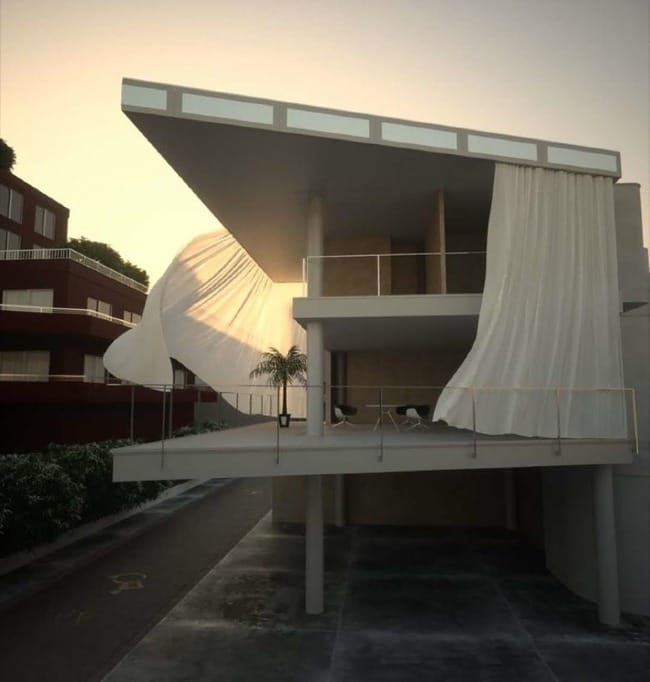
Right: Mt. Fuji Heritage Center, Shizuoka; Left: Curtain Wall House, Tokyo.
But as Shigeru has himself articulated, although these projects and many others have given him prestige, they are not, in his mind, his most significant work. As he expresses in the TED talk at the end of this post, he believes working for the good of others is an important aim that is too commonly missing from the field of architecture.
Throughout the years, Ban has presented himself in areas of natural disaster, voluntarily making himself available (pro bono) to construct housing that meets the needs of those who have undergone earthquakes, war, and famine, and extreme situations. It is these humanitarian projects that have made him more than just a skilled architect in the minds of so many. And it is the material he uses (or reuses) in these projects that has provided a template of creative, sustainable architecture to many admirers.
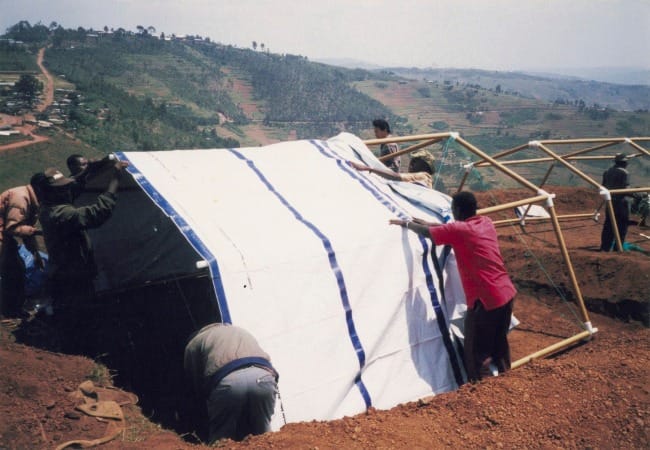
Ban’s humanitarian architectural endeavors began in the aftermath of the Rwandan civil war in 1994. Seeing the solution at the time—plastic tarps given out to each refugee—he felt this wasn't good enough and wanted to find a better solution. Having already experimented using cardboard paper tubes at an earlier art exhibit, he turned that experimentation to very practical use as he created prototype shelters, which he first used in Rwanda and later in Kobe following the 1995 earthquake. His proposal to use low-cost, easy-to-use paper tube shelters for refugees quickly made him known as an architect committed to improving the dire situations that the world’s dispossessed population found themselves in.
Ban began to identify and empathize with the poverty and inadequate shelter facilities provided to the refugees scattered in different parts of the world and founded the NGO Voluntary Architects’ Network (VAN) to provide disaster relief assistance. It has provided temporary housing in Turkey, western India, Sri Lanka, China, Italy, and Haiti, to name a few places of their work.
He and his organization continue to show up after natural disasters, volunteering skill, expertise, and ideas to solve lodging and community gathering space needs brought about by hard circumstances. The construction material and design are based on locally available materials, climate, and need. In Nepal and India, for instance, he built the "paper log houses" pictured below, structures that took little money or no money to construct. It has been said of him, “When tragedy strikes, he is often there from the beginning.”
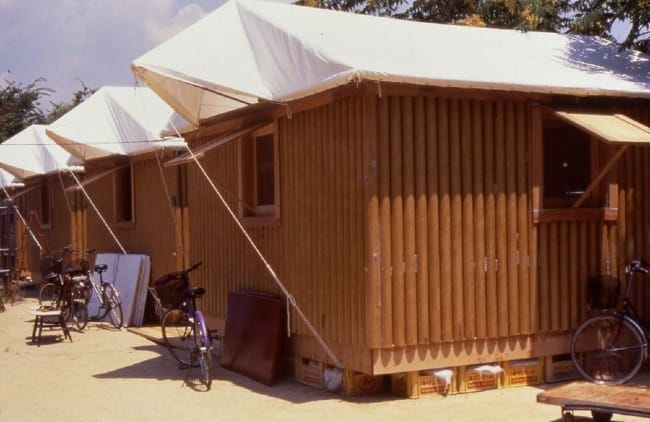
He has spent years honing his materials. The cardboard tubes he uses are his most iconic building materials. After treating them with polyurethane, they are waterproof and fireproof, and solid enough to be used as a base for erecting structures at very little cost.
Ban's motivation to use this type of material comes from his natural frugality and an ability to see the potential usefulness of typically discarded materials. He makes ingenious use of lightweight, unconventional, and environmentally responsible materials — in particular, paper and bamboo.
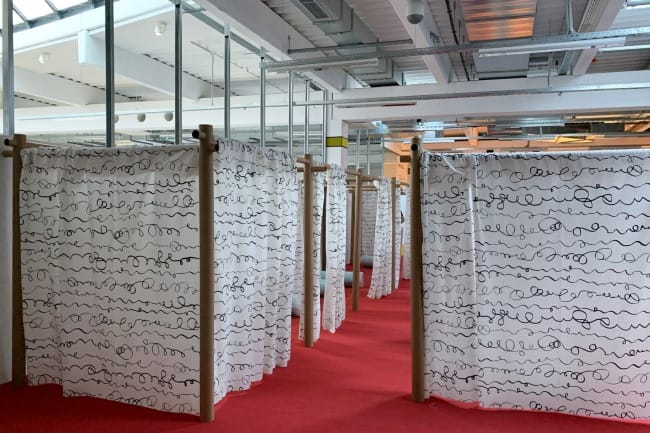
One application he has developed from his cardboard tubes is an easy-to-assemble partition system for open, large spaces such as a gym or hall that commonly provides emergency housing to large groups of people clustered together as they take refuge from natural or human-caused disaster.
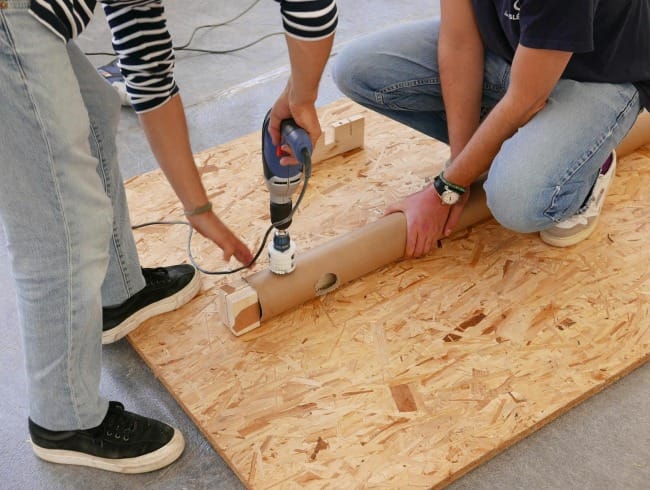
When he first came upon a space with its floor covered by refugees, he was appalled by the lack of privacy and dignity and devised these cheap and instant room dividers to improve the situation. Ban's designs emphasize privacy and aesthetics—when people's lives are turned upside down, their psychological wellbeing is something that must be considered right along with their physical health and safety. In recent months, Ban has installed this system in Ukraine, where refugees have been displaced from their homes by the war.
Living spaces are not his only disaster zones projects. In Kobe, after the earthquake, he erected a "paper church," which was intended to be a temporary solution that would last just last a few months. It was so beloved by the community, however, that it lasted ten years at its Japanese site. Ten years later, when Taiwan suffered from an earthquake, the structure was disassembled, moved, and reassembled in Taiwan, where it remains today, as beloved there as it was in Japan.
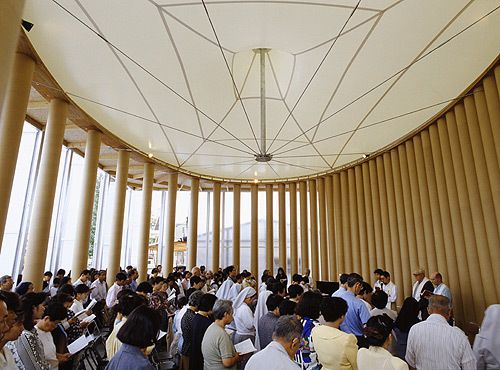
Another of his large-scale construction projects in a disaster zone is the creation of a transitional cathedral for Christchurch, New Zealand, after the earthquake made the landmark church there unusable.
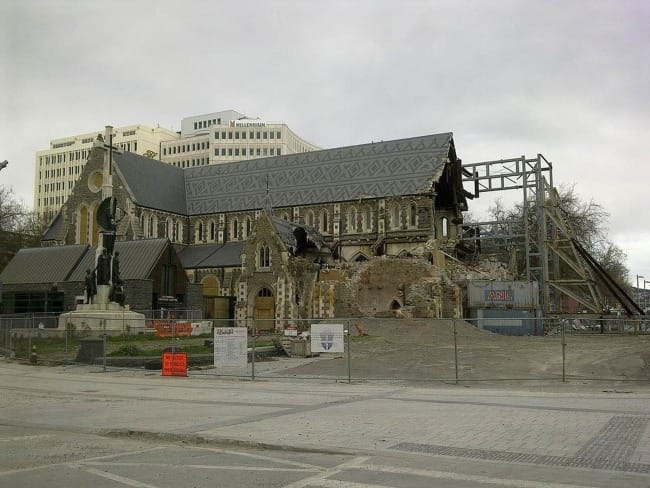
His construction of the "Cardboard Cathedral" has provided a meeting place that, although originally planned as temporary, has since become a more permanent fixture. It is expected that the repairs on the original cathedral will take another five years to complete and it is likely that the Cardboard Cathedral will continue to be used even after the permanent Christ Church Cathedral is back in working order.
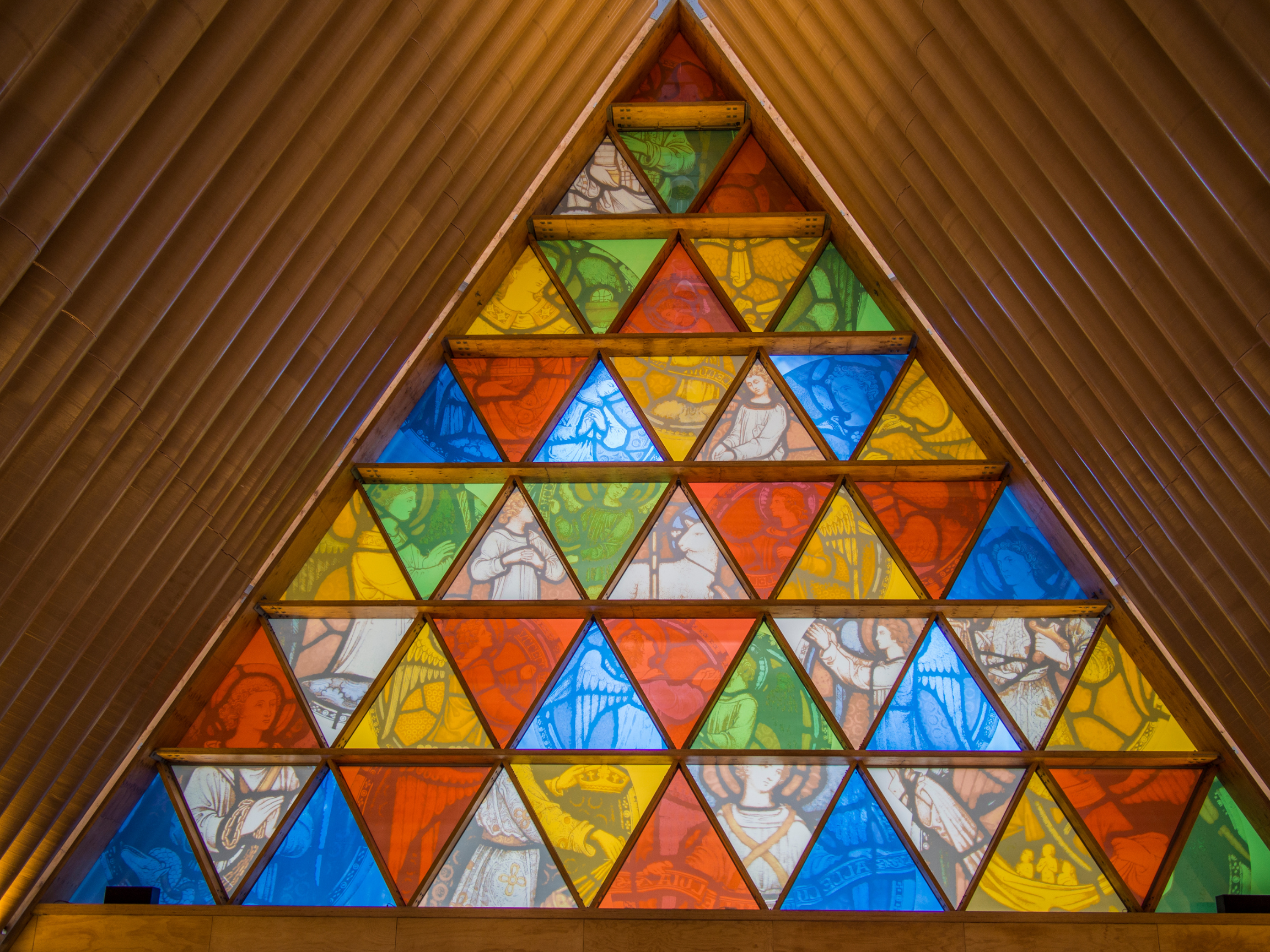
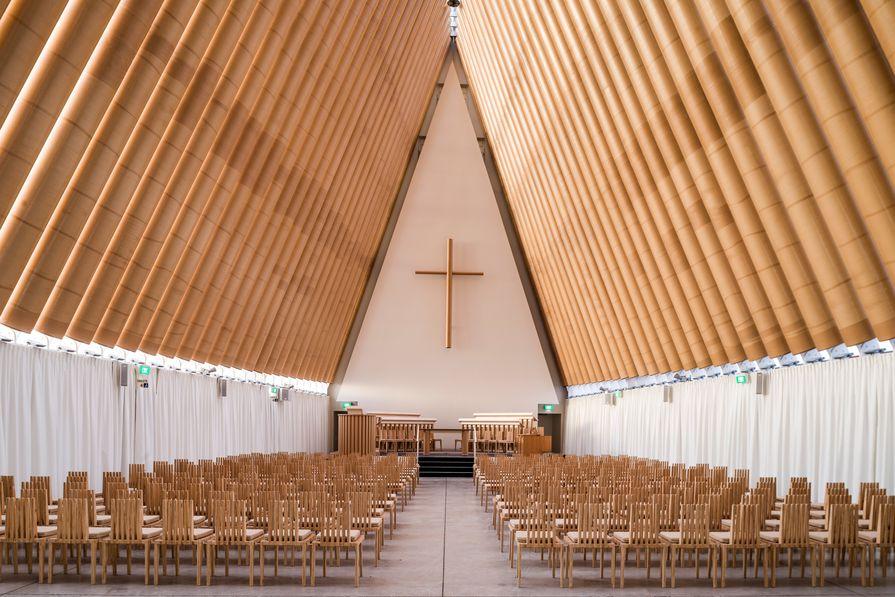
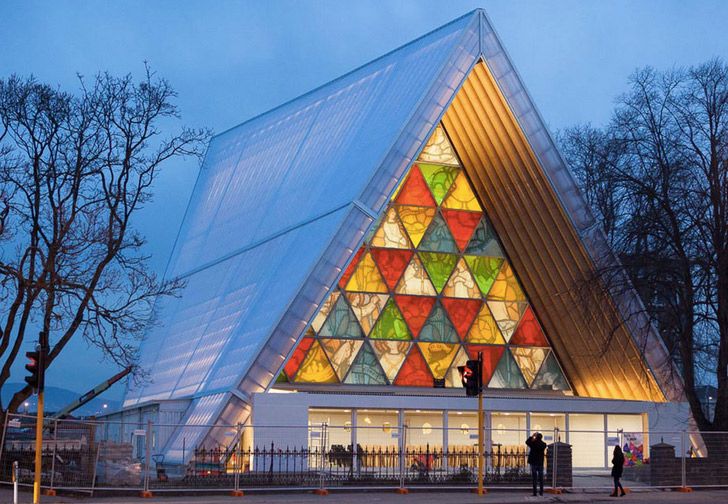
Cardboard Cathedral, Christchurch, New Zealand
Even so, it is not Ban's expectation that any of his works will last forever. In the same way that he strives to use repurposed and recycled material, it is a priority for him that his own works, when their use is complete, can themselves be reused, recycled, or absorbed back into the earth. In a profession where creating a lasting monument is a common desire, this commitment to sustainability is impressive.
Reflection Questions: Have you found creative ways to work for justice for the earth and the creatures in it? Have you found ways to be more sustainable in your work and home?
To leave a comment, click in the comment box below, or email me at info@circlewood.online.
Louise

To watch a TED talk given by Ban, click on the YouTube video below.